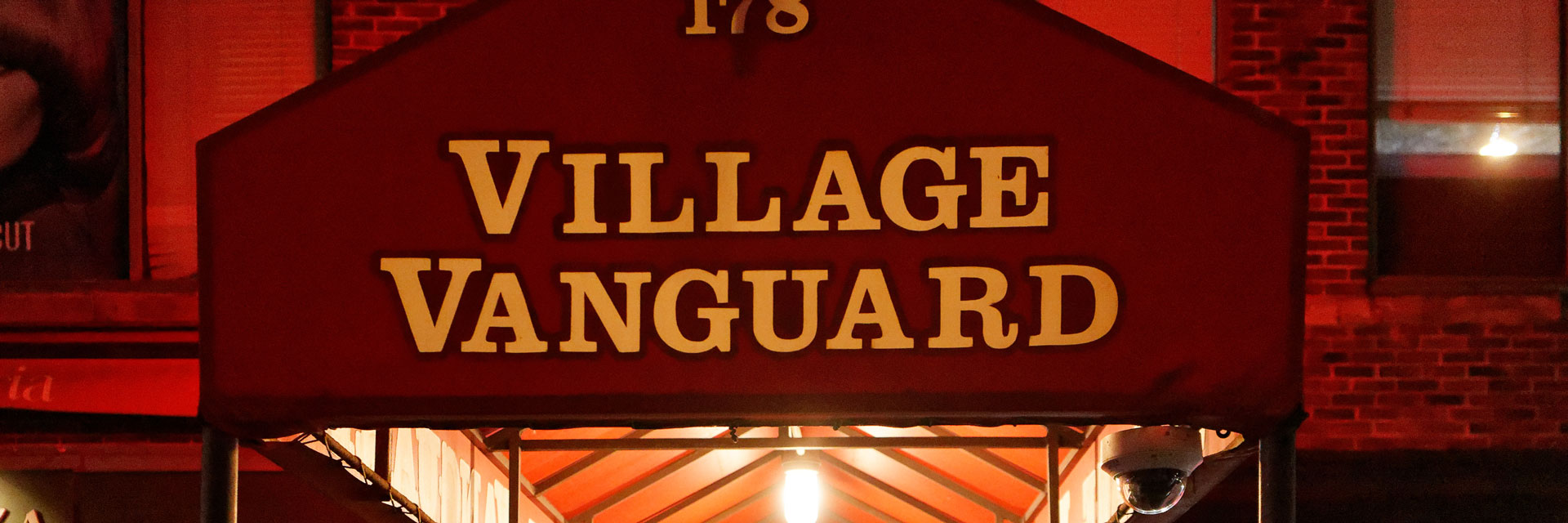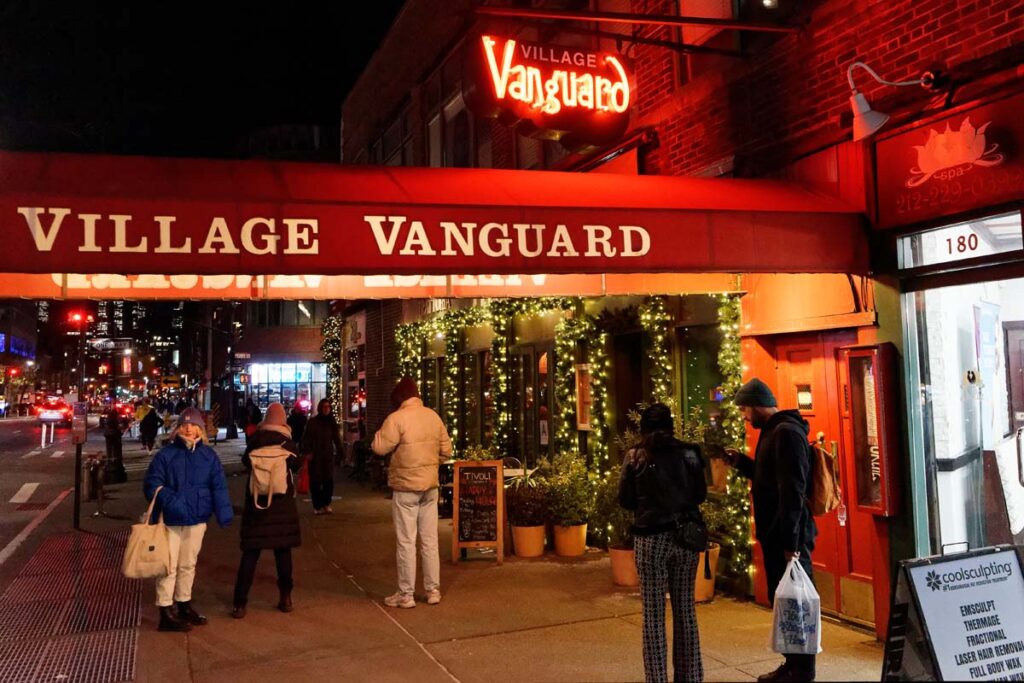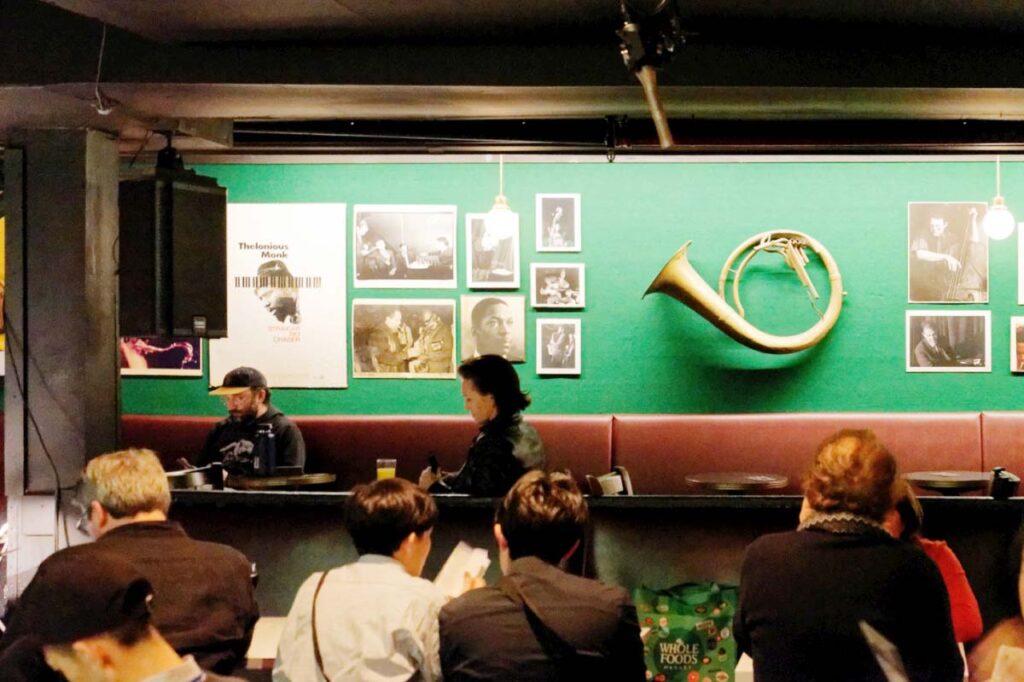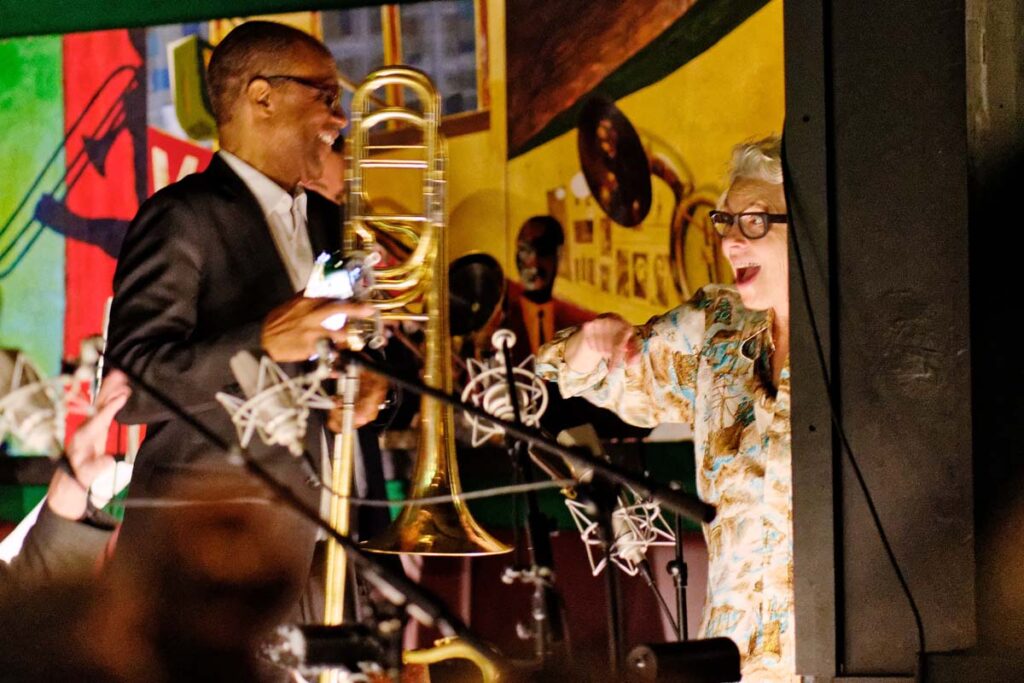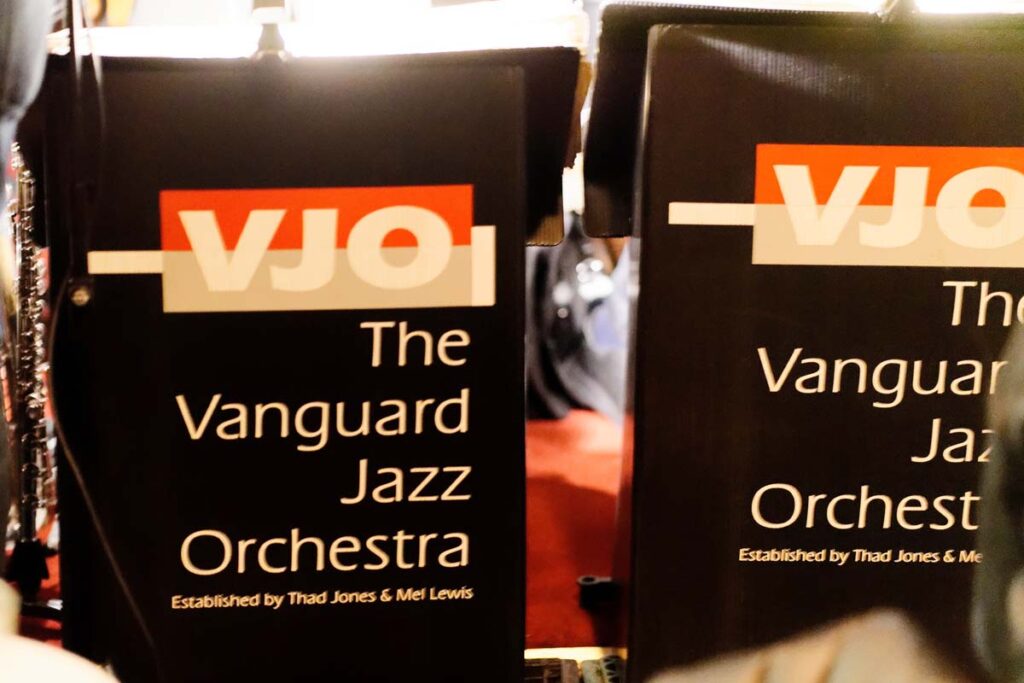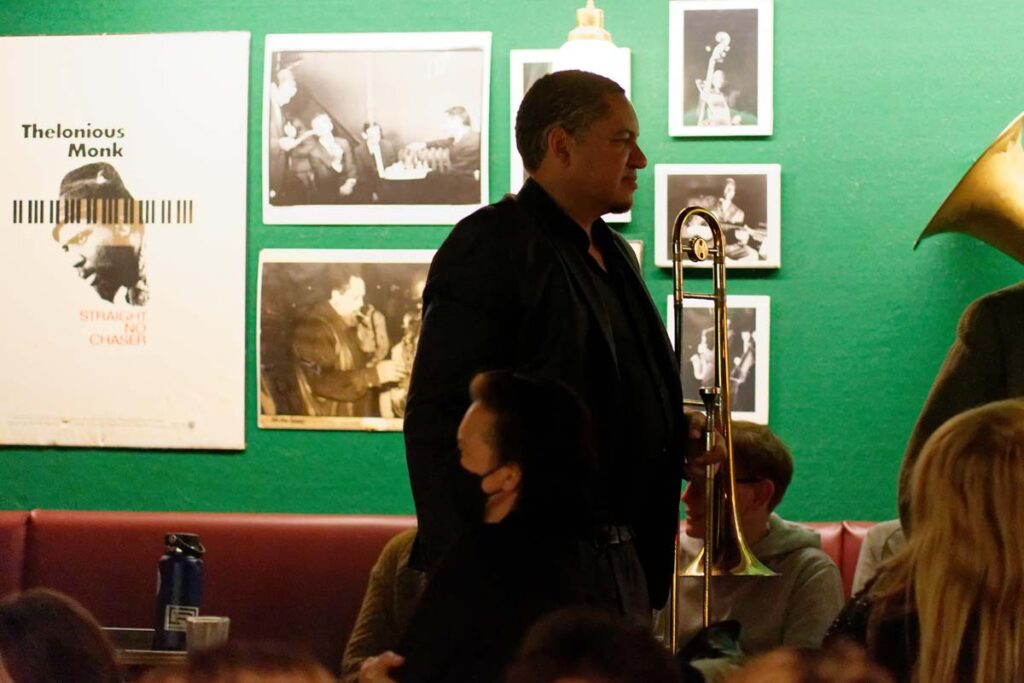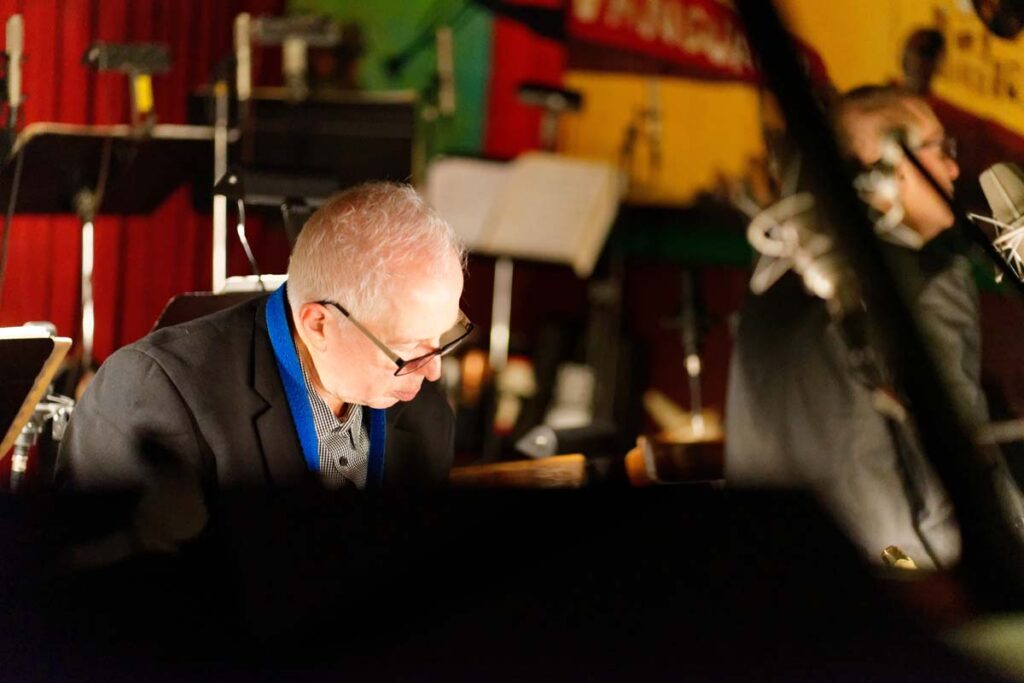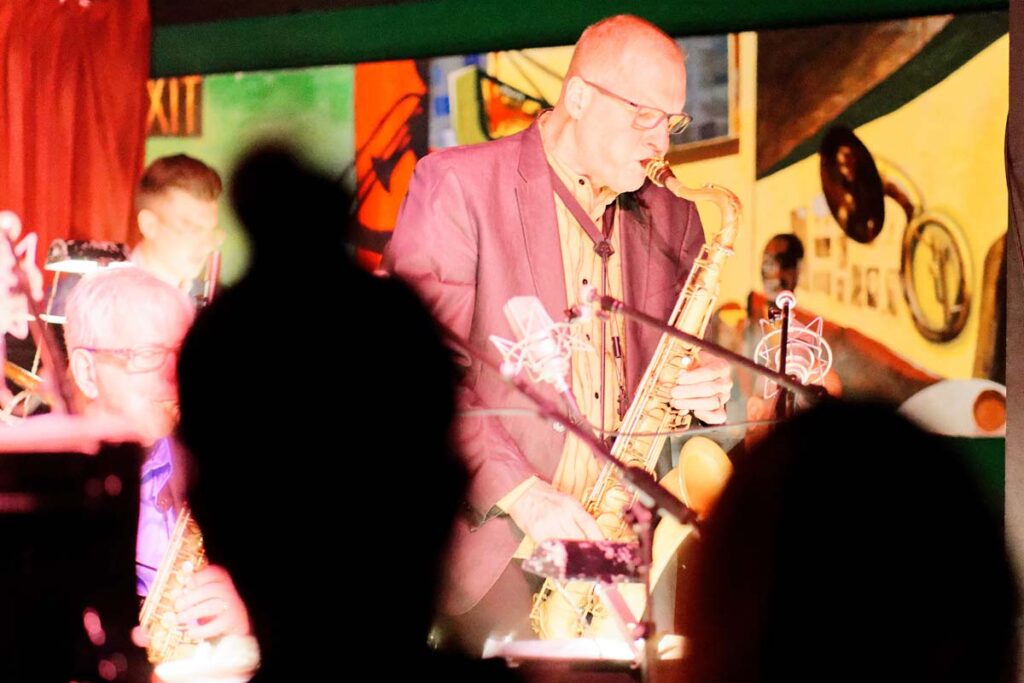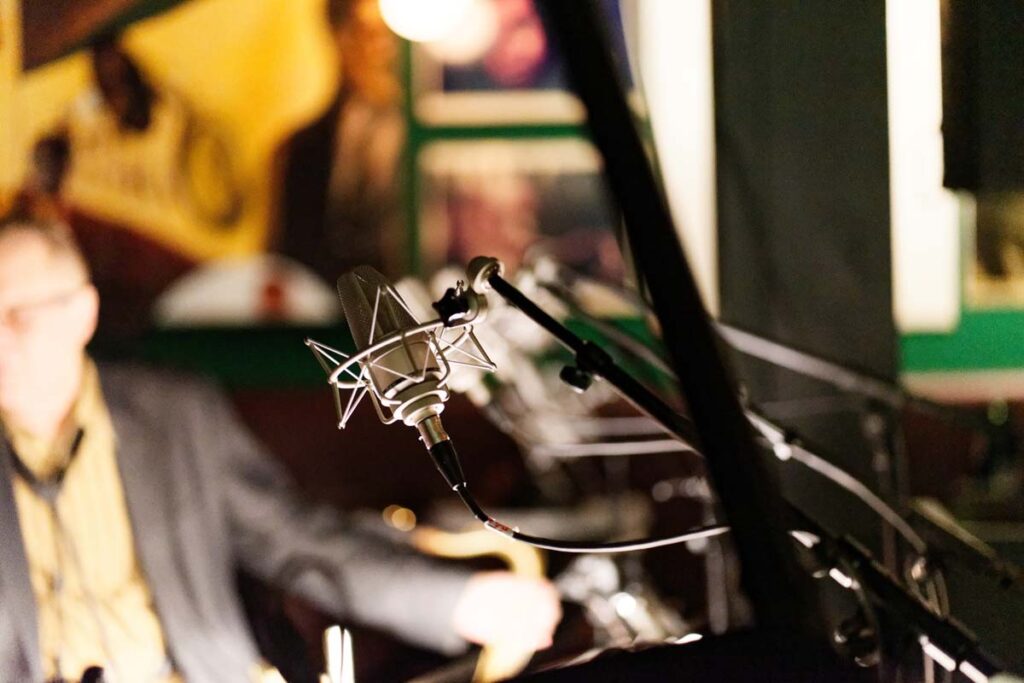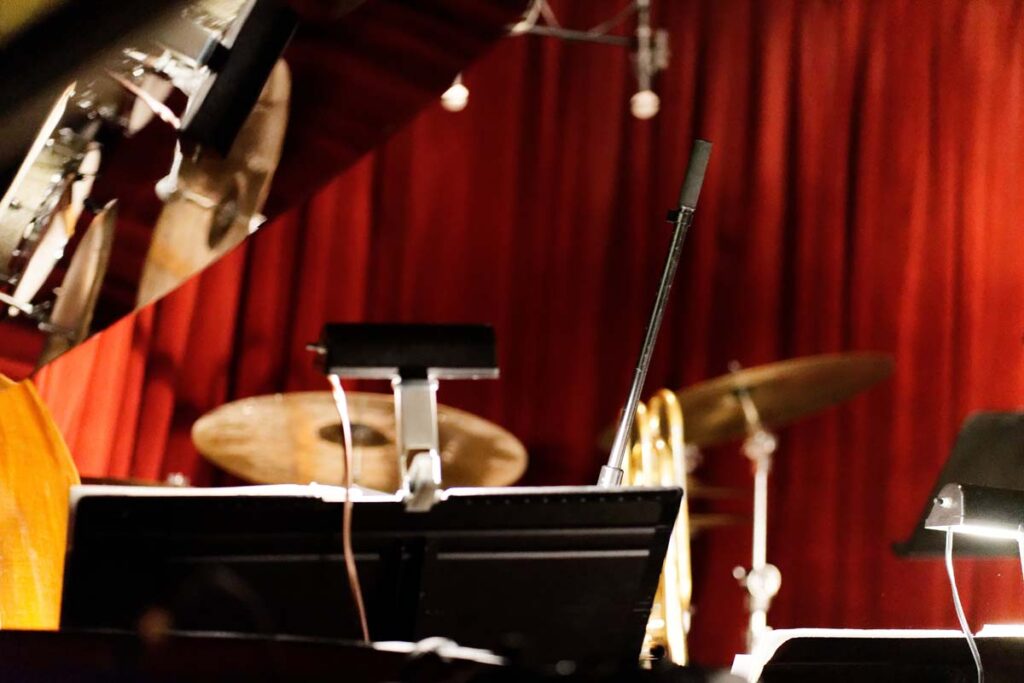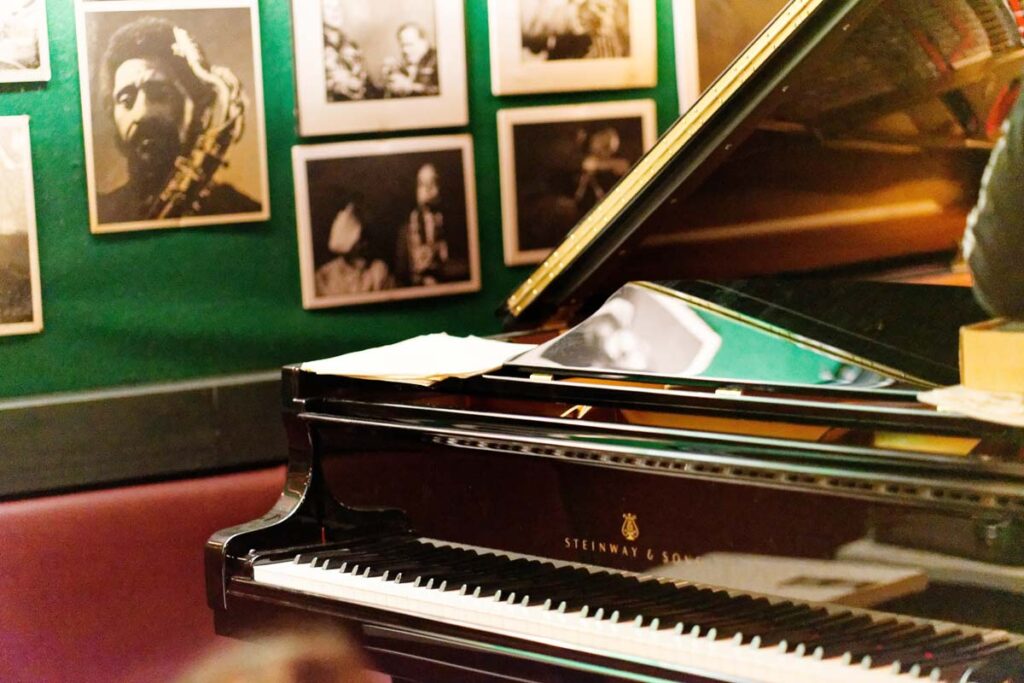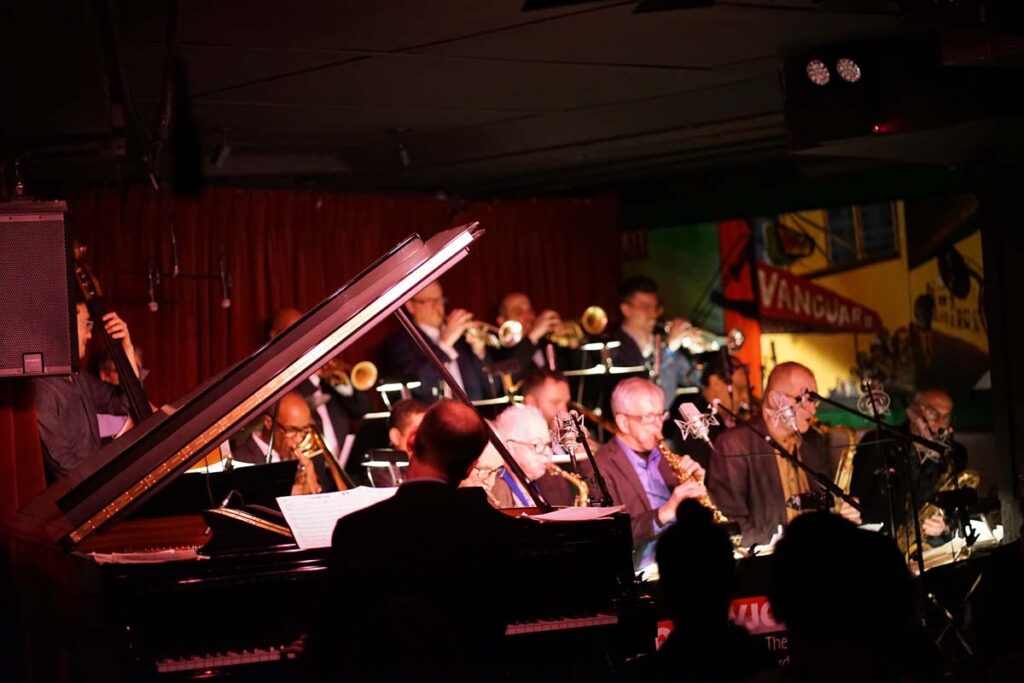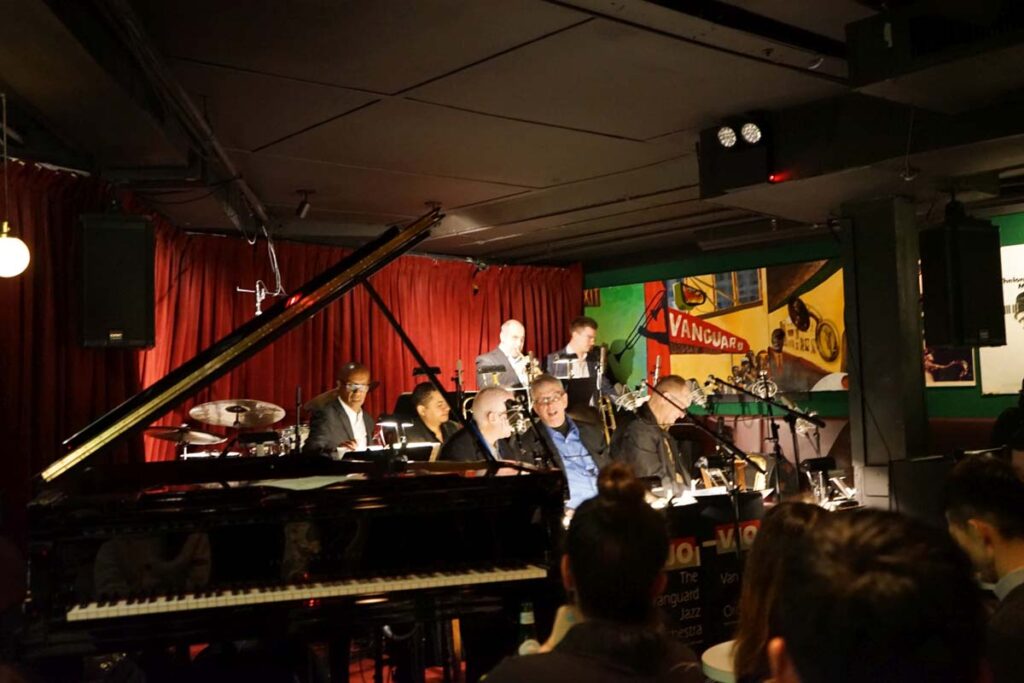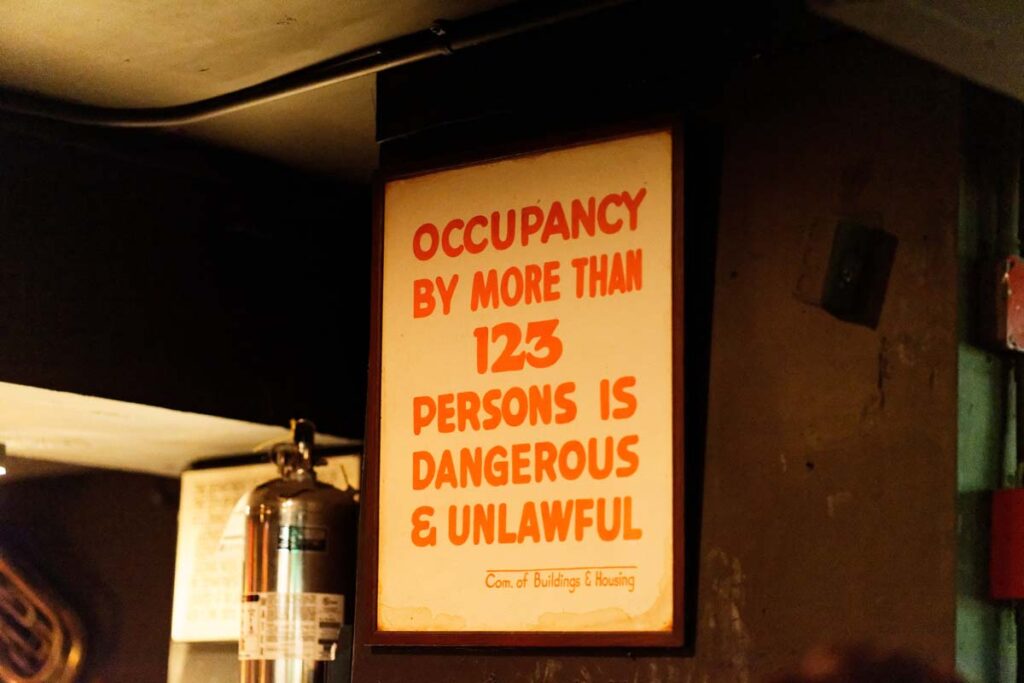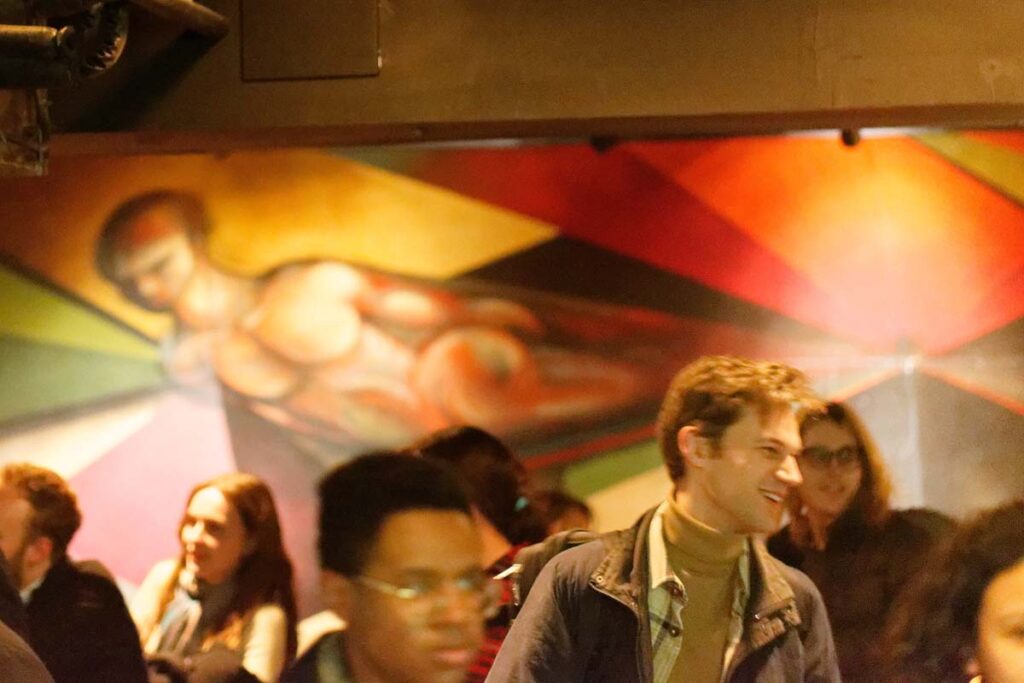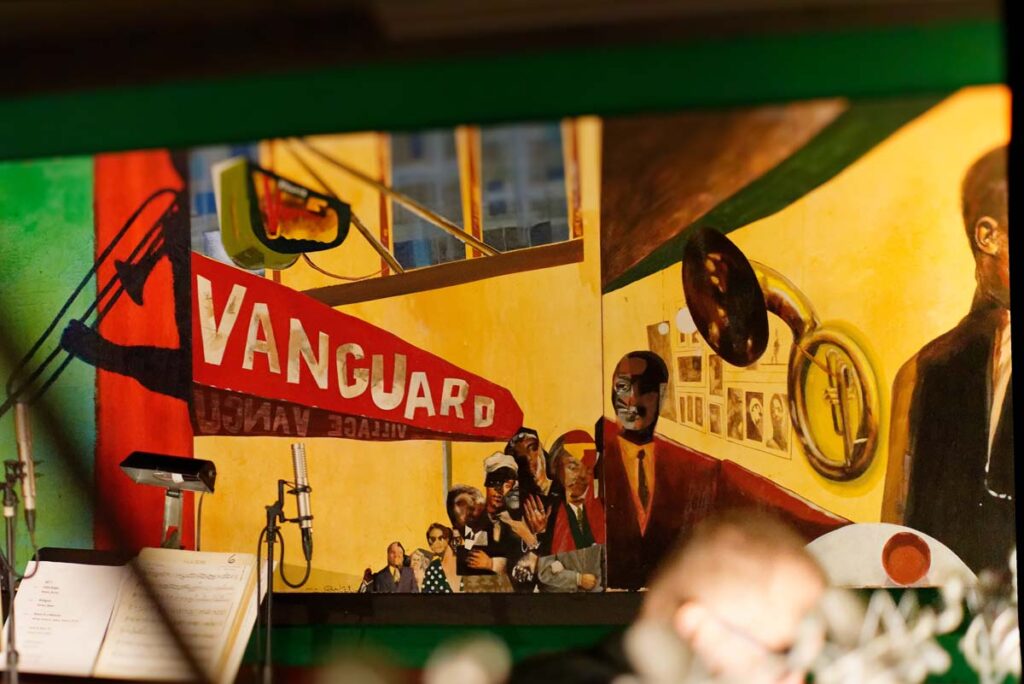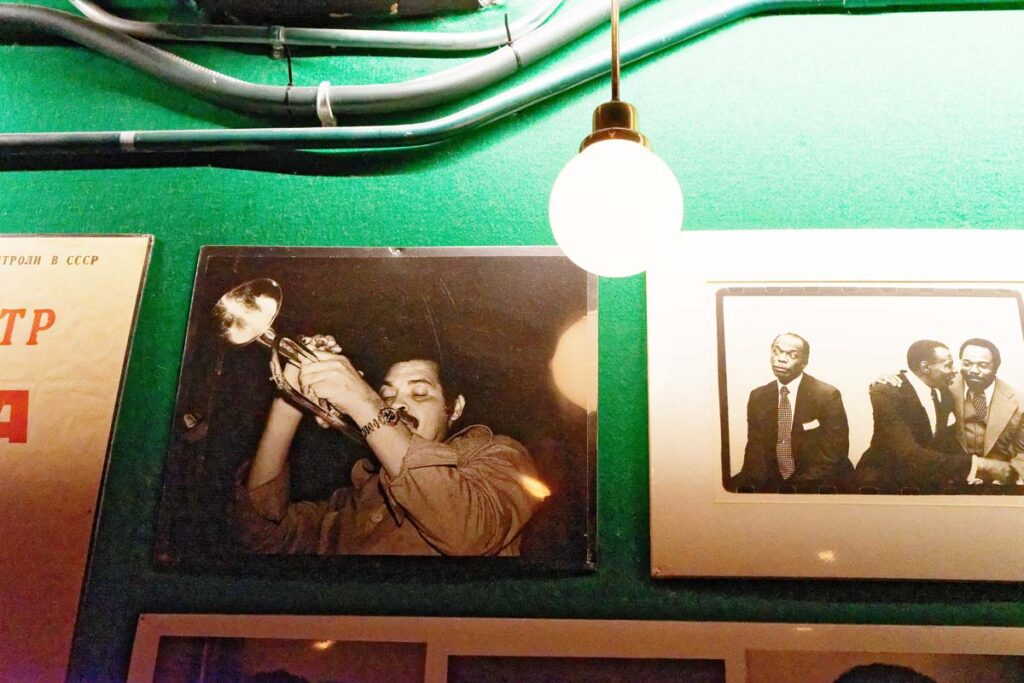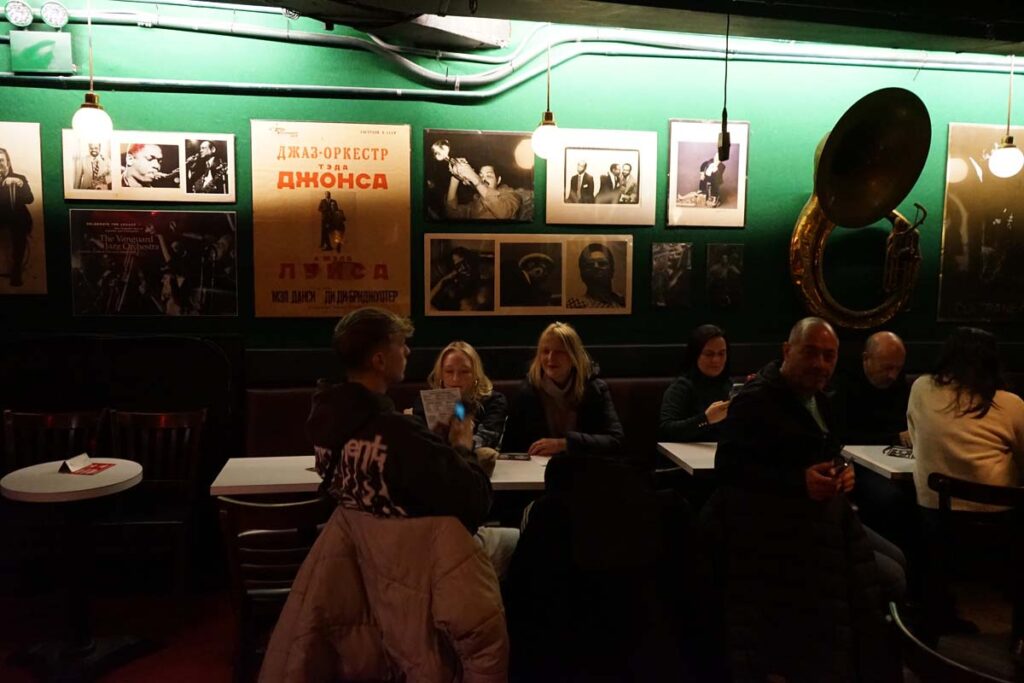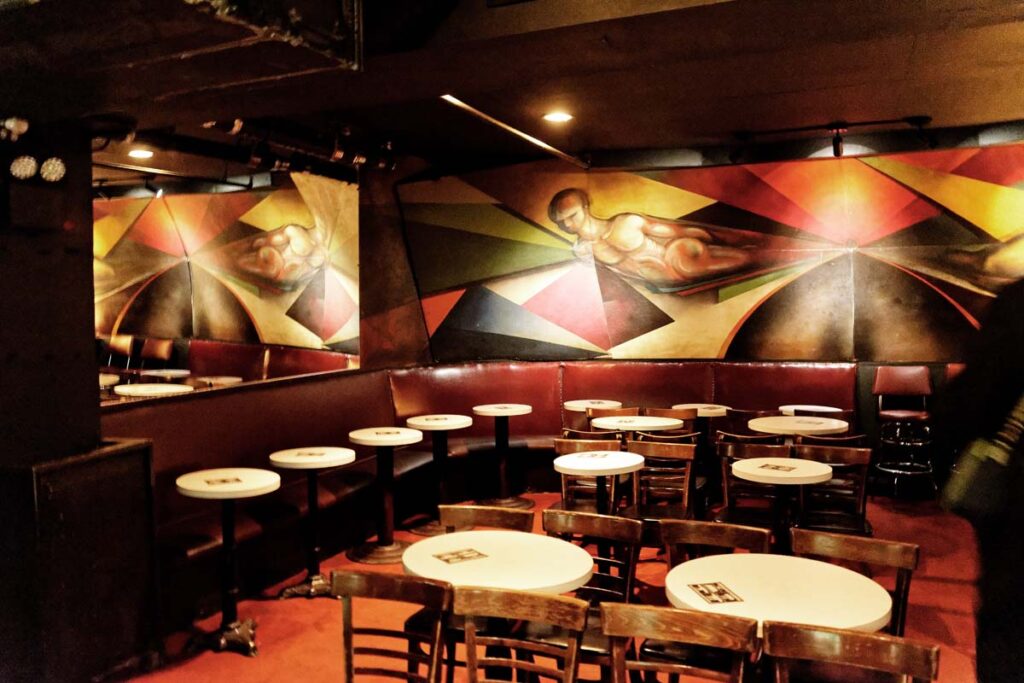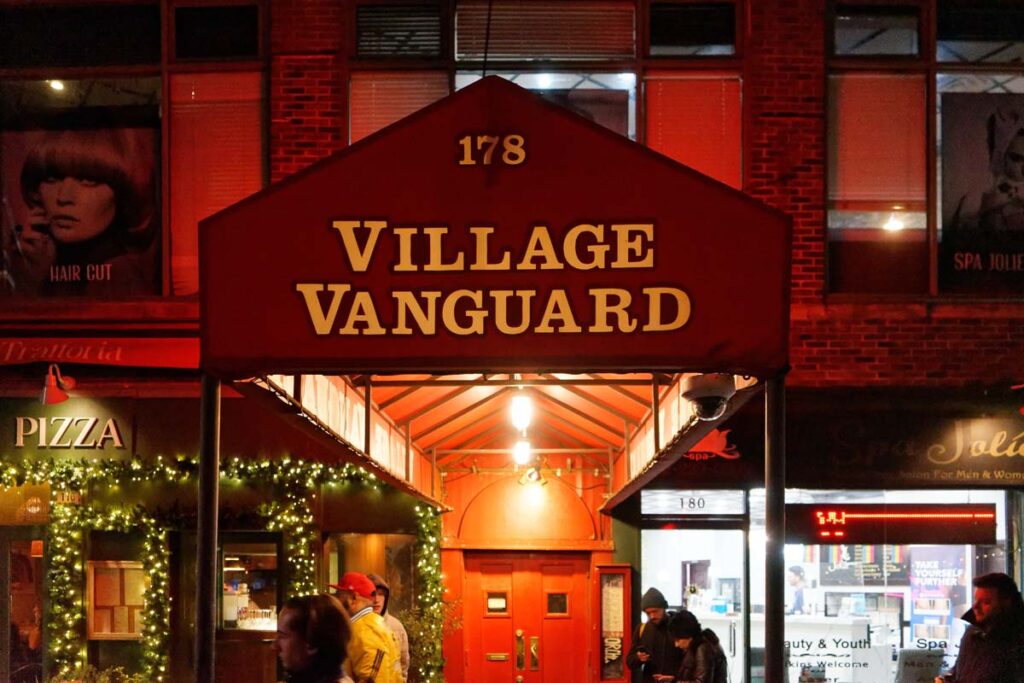During a family trip to New York, our author Roland Schmenner not only had the opportunity to visit the world’s most famous jazz club, but also had the chance to chat with owner Deborah Gordon about the club’s history.
When discussing the Village Vanguard, you also have to talk about the West Village to the west and east of 7th Avenue between Washington Square and the legendary Christopher Street. In the 1970s, this was the hotspot of the New York Underground, the Mecca of the political and artistic avant-garde. Today, the traces of the omnipresent gentrification cannot be overlooked here either. Even though 7th Avenue – especially after sunset – still exudes a rather austere charm, the side streets have become noticeably more bourgeois. The brownstones have been chicly renovated and – like Taylor Swift’s apartment on Cornelia Street – are being sold for a cool 18 million dollars. So it’s no wonder that the neighborhood has street posters asking people to keep quiet while buying a 300-dollar-hoodie in some trendy designer boutique.
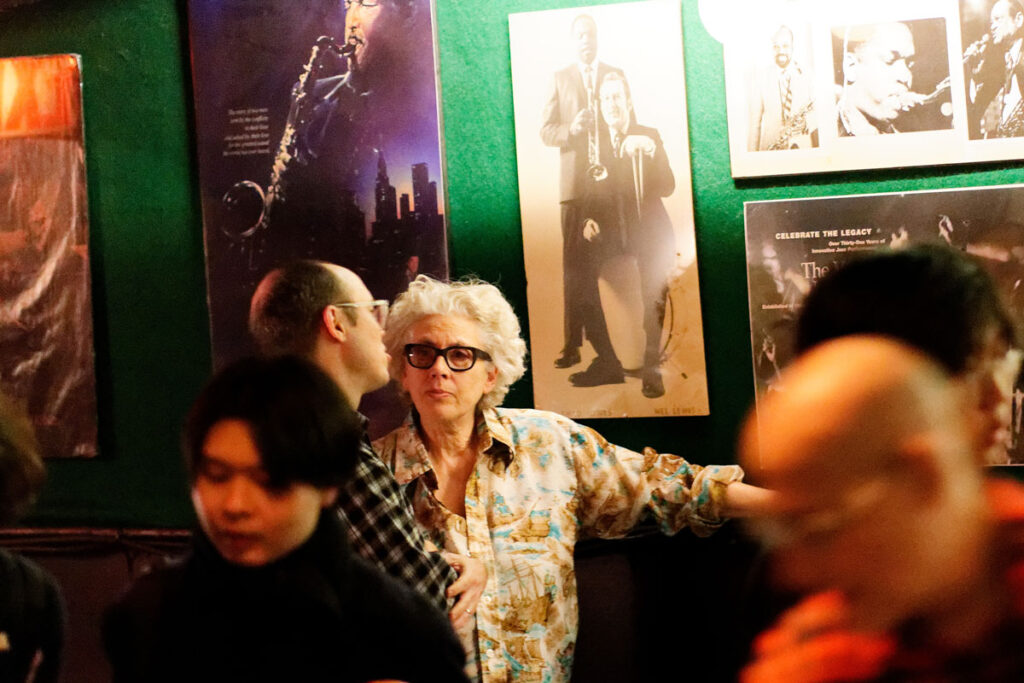
Against this backdrop of urban change, it is remarkable that the Village Vanguard has so far adamantly resisted all the changes around it and has held its ground for almost 90 years. Letting this number sink in, it’s with a certain awe that you descend the steep basement staircase that leads to the holy grail of American jazz. Once downstairs, however, you soon lose all fear of this place steeped in tradition – that’s how unpretentious the club’s interior and how relaxed the welcome is. Only the brightly colored murals on the side of the stage are reminiscent of the wild atmosphere of the 70s, while the original photographs of John Coltrane and co. indicate whose spirit is blowing here. And it is this musical tradition that still characterizes the Vanguard today, as it is all about music. While the other big club names such as Birdland or the Blue Note have long since introduced the bad habit of table dining where the evening tends to become a costly full-on event, the Vanguard proudly points out that there is no food at all, “not even a peanut”, as can be read on the homepage. Drink prices sit around the lower end for New York bars, and before the concert begins, silence is expressly requested, including a ban on cell phones and photography – just music!
Before the concert by the legendary Vanguard Orchestra, we have an appointment with manager Deborah Gordon, who kindly gives us a lengthy interview and lets us take a look behind the scenes. The club was founded by her father Max Gordon, one of the most influential jazz impresarios of the 20th century. Originally intended as a club for folk and cabaret, where such illustrious celebrities as Woody Guthrie and Harry Belafonte performed, the Village Vanguard transformed itself over the years into a pure jazz club. Since 1957, jazz greats such as Sonny Rollins and John Coltrane have performed here, today it is Steve Coleman and Vijay Iyer. The Vanguard has always been a family affair from the very beginning. When Max Gordon passed away in 1989, his wife, Lorraine Gordon, took over the day-to-day business. “After my father died, my mother opened the Vanguard again the very next evening,” says Deborah Gordon. Lorraine Gordon passed away in 2018, and Deborah Gordon has been running the club ever since.
The fact that the Vanguard is considered the jazz club par excellence is certainly due to the booming market for jazz vinyl in the 1960s. In 1957, Sonny Rollin’s legendary Blue Note release Live At The Village Vanguard laid the foundation for the success of Vanguard recordings, which was soon followed by a veritable explosion of releases in the years from 1960 onwards, from Kenny Burrell to Cannonball Adderly and John Coltrane. Today, the total number of recordings released is in the three-digit range, the most recent entry being the almost rock album Undercover by guitarist Kurt Rosenwinkel in the fall of 2023. There are also a number of recordings that were never intended for the big market, but were only distributed in a small circle. The Village Vanguard is also not the publisher of the recordings, but merely acts as the lessor of the club and the equipment. A recording session was also scheduled during our visit: The Vanguard Orchestra’s concerts were being recorded, for which 32 microphones had been set up above the stage and in the audience.
Deborah Gordon was kind enough to let us take a look behind the scenes: “As writers for a high-end magazine, surely you’re interested in the recording studio?” With a mischievous smile, she added that we shouldn’t expect too much and directed us to a hidden room that somehow didn’t look like a recording studio at all. This was the “multi-purpose room”, said Gordon, pointing to the dishwasher for the glasses on the right, a small catering area for the musicians on the left, and in the far corner, behind a mountain of cables, we found the club’s two recording engineers sitting at a laptop. “We usually do ten to twelve recording sessions a year,” they explained to us; they usually have a free hand with the recordings, as they are very familiar with the acoustic characteristics of the room. During the break between sets, the two of them could also be seen fine-tuning the microphones. The acoustics in general: the room is strangely wedge-shaped, almost triangular, the ceilings are low and the chairs are close together. And yet the acoustics, even when the stage is overcrowded with 17 musicians, are magnificent. To this day, I wonder whether this is the case despite or perhaps because of the peculiar layout of the room.
Despite the club’s fame, you shouldn’t make the mistake of thinking that day-to-day business is easy. Deborah Gordon tells us about the individual regulars who have been coming to the Vanguard at least once a week since 1965, even now in their old age, but that easily belies the fact that the jazz scene – even in New York – is a small, scattered bunch. Many young music students come to the Vanguard Orchestra’s concerts, as the band members often teach at Lincoln Center, but otherwise the audience depends on the respective artists. And, of course, tourists are also an important target group: “For many, a visit to a famous jazz club is a must alongside the Statue of Liberty and the Empire State Building.” Of course, they compete with the other big clubs in Manhattan for the audience. When we ask how the relationship is with Birdland or the Blue Note, for example, Deborah Gordon is relaxed, even generous: “We’re happy to see each other succeed because every sold-out jazz club is a sign that the small jazz scene is still alive.” However, when we ask whether they help each other out in difficult times, they shake their heads: “The friendship doesn’t go that far. We work in the same business, have the same musical preferences, but we are also competitors, each with our own history and concept.”
The fact that the scene is also small at the Vanguard can be seen in the many hugs and conversations between the musicians, the audience and Gordon’s staff; they know each other, they appreciate each other. It is probably this intimate and sometimes familiar atmosphere that makes the club so successful. Deborah Gordon says goodbye to us personally with a handshake before we plunge hungrily into the cold, clear night of the West Village and visit another long-established institution untainted by gentrification. Not far from Washington Square Park, Lanterna di Vittorio has been serving guests such as Yoko Ono and Taylor Swift since 1977, but that would be another story about the artistic bohemia of the West Village.
Village Vanguard
178 7th Avenue South, New York
NY 10014
United States

